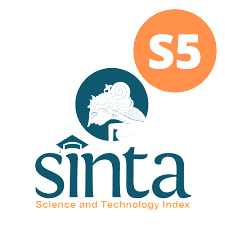PENGARUH MODEL PEMBELAJARAN COURSE REVIEW HORAY TERHADAP HASIL BELAJAR MATA PELAJARAN IPA MATERI CIRI-CIRI MAKHLUK HIDUP SISWA KELAS III SDN 02 NGAWEN PATI
DOI:
https://doi.org/10.33061/js.v1i1.2298Keywords:
Course Review Horay, science learning, learning outcomesAbstract
The purpose of this research to find out the influence of learning model Course Review Horay against the results of the study The IPA class 3 SDN 02 Ngawen. Methods used i.e. True-Experimental Designs kind of Pretest-Posttest Control Group Design. Results of the study showed higher rataan posttest has 82.045 on the experimental class and 79.091 rataan on classroom control as well as pretest have rataan value 80.68 class experiments and 58.18 averagedan class controls so that the value of the regression test  and test linieritas  1,89 with 2.85 it was concluded that Fcount < Ftable means H0 accepted ar t linear equations occuring inya , perh i tungan with test signifikanci   887.57 and 4.35 it was concluded that the Freg  >Ftables mean Ho is rejected, meaning significant regression equation diterima. As for the influence of great determination coefficient test results with Microsoft Excel 2013 by 30% while the rest is influenced by the fakother tor. It is said that model learning Horay Course Review effective influence on learning outcomes or IPA students Land 02 Ngawen
References
Course Review Horay, science learning , learning outcomes
Downloads
Published
How to Cite
Issue
Section
License
Authors who publish this journal agree to the following terms:
- Authors retain copyright and grant the journal right of first publication with the work simultaneously licensed under a Creative Commons Attribution License that allows others to share the work with an acknowledgement of the work's authorship and initial publication in this journal.
- Authors can separately make additional contractual arrangements for non-exclusive distribution published by the journal (e.g., publish it in a book), with an acknowledgement of its initial publication in this journal.
- Authors are allowed and encouraged to send their work via online (e.g., in the institutional repositories or their website) after published by the journal.














